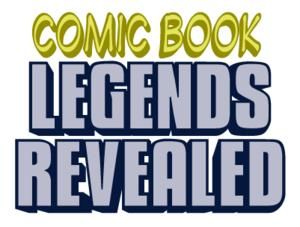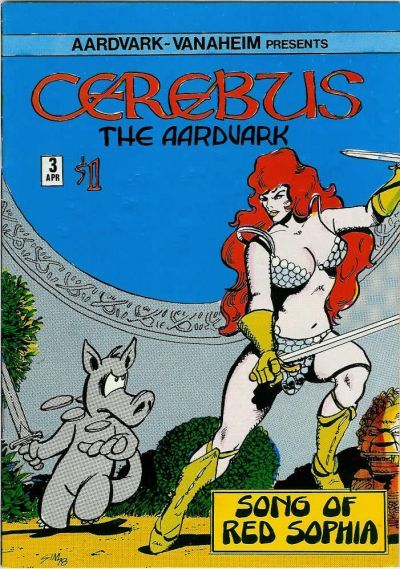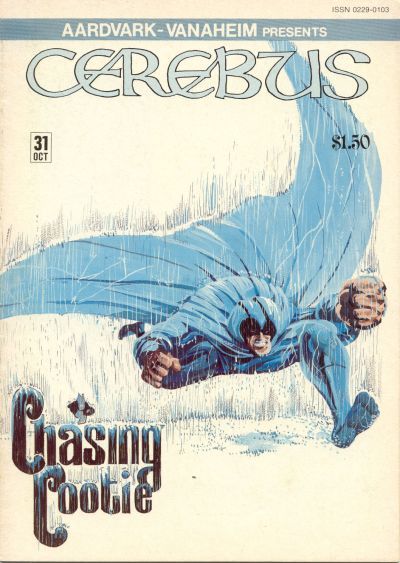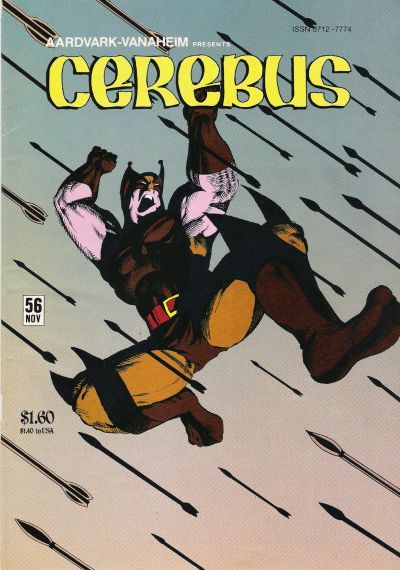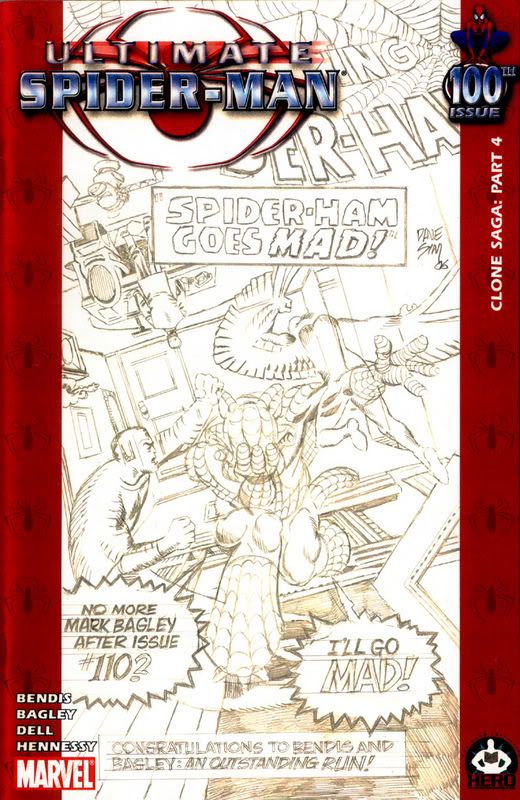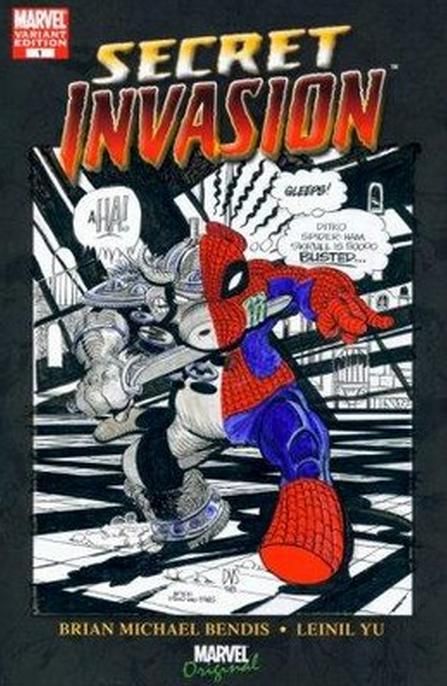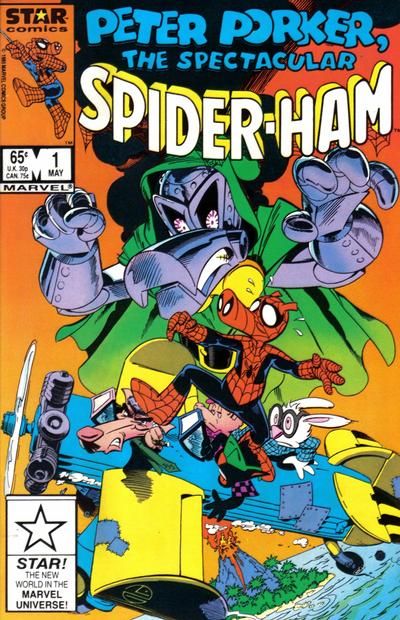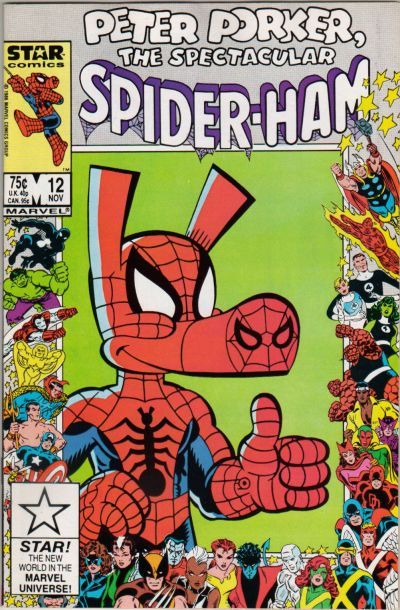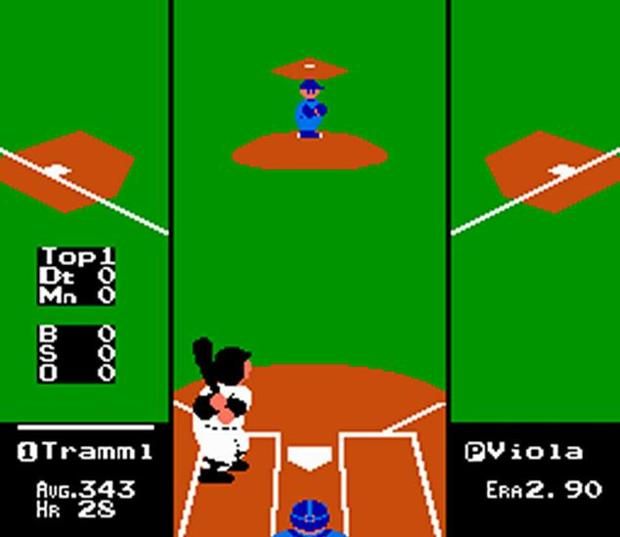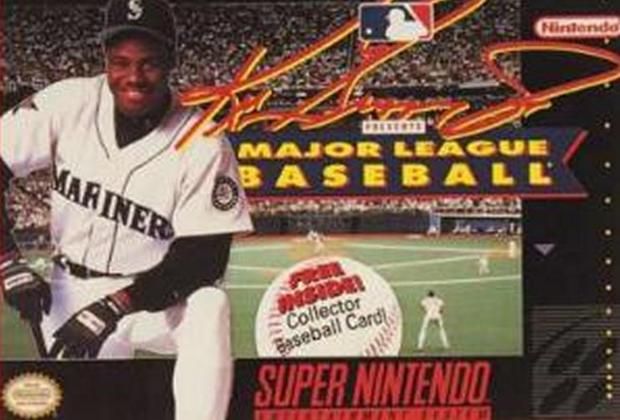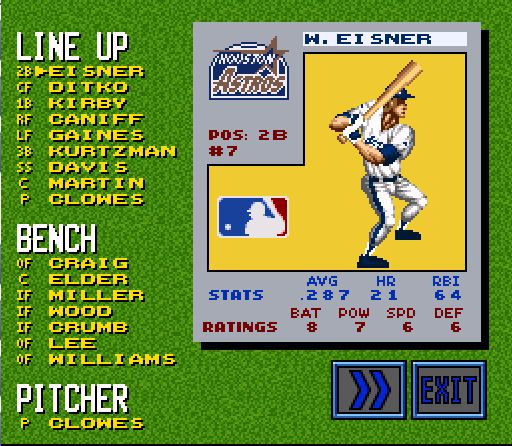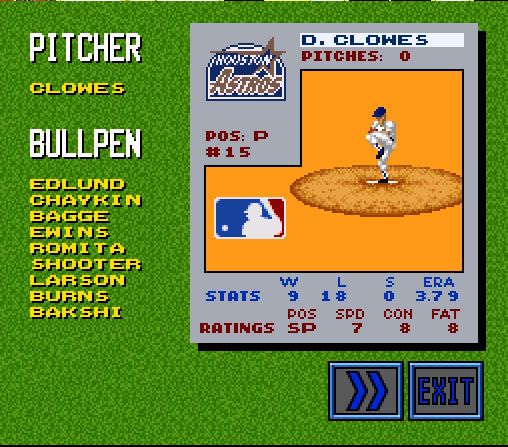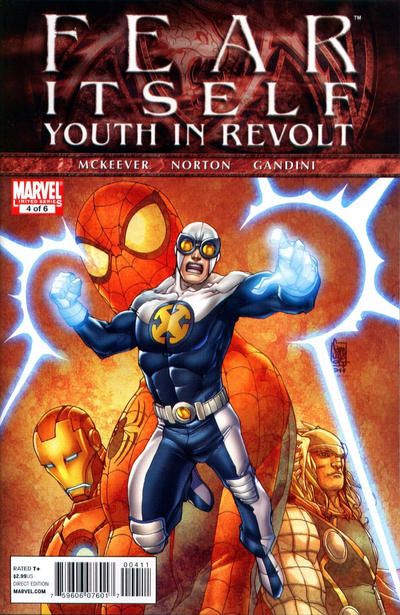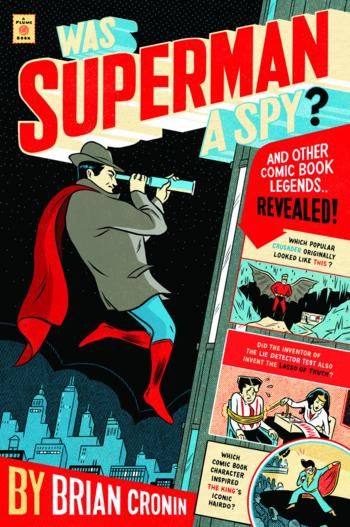Welcome to the three hundredth and fifty-second in a series of examinations of comic book legends and whether they are true or false. Today, learn whether Spider-Ham was really inspired by Cerebus, discover what Marvel character was nearly Captain Marvel and marvel at the oddity that is the comic book baseball team in the Ken Griffey Presents Major League Baseball video game!
Click here for an archive of the previous three hundred and fifty-one.
Let's begin!
COMIC LEGEND: The creation of Spider-Ham was inspired by Dave Sim's Marvel parody characters in Cerebus.
STATUS: I'm Going With False
A couple of weeks ago, I did a Comic Book Legends Revealed about Dave Sim and his treatment from Marvel over his usage of the Wolverine parody character, Wolveroach. This legend is about what Sim felt that Marvel did in response to his parodies.
In the late 1970s and early 1980s, Dave Sim would occasionally parody other comic book characters (heck, the book as a whole began as a parody of Conan the Barbarian), including Red Sonia, Moon Knight and Wolverine...
Shortly after Marvel warned him about using Wolveroach on the covers of Cerebus, they debuted Spider-Ham in 1983...
Sim gave his thoughts about the character in the essay "Dave Sim On Parody & Copyright" in Following Cerebus #3:
when Marvel did Peter Porker, The Amazing Spider-Ham - I suspect largely as a warning shot across my bow over my doing Wolverroach. Essentially they did Cerebus in a Spider-Man costume. It was an attempt to play some hardball with me. You want to play cute, we can play cute too. Of course my theory, which dates from that time period, is that you protect your trademark and copyright by being good at what you do. Twenty years later on, Wolveroach is far more memorable than Spider-Ham, even though there was, in my view, a far greater level of appropriation going on in the later case.
It is not like Sim has freaked out over the existence of Spider-Ham. He's done two covers for charity featuring the character....
However, he believes that the character was based on Cerebus.
I figured I'd ask Tom DeFalco, the creator of Spider-Ham, about the question. Tom opened by saying that he had not heard the theory before and then explained:
Dave Sim and Wolveroach were never on my radar when I started working on Spider-Ham. Spider-Ham came out of a discussion that I had with Larry Hama about Marvel's licensing program. Larry and I often discussed various aspects of the company. We realized that Marvel could license its characters in almost every way...except for plush toys. In our minds, the Marvel super-heroes didn't seem to translate all that well to plush. Since Larry and I are both big fans of funny animal comics--I lean toward Walt Kelly's Pogo and I believe Larry is a hardcore Carl Barks Duck Man--we started talking about about doing funny animal versions of our characters.
Not to belittle my own creativity, but Spider-Ham seemed the obvious choice for Spider-Man and Peter Porker for Peter Parker. Anyway, before I knew it, Larry and I had somehow convinced Shooter to sign off on a one-shot that we dubbed MARVEL TAILS. I no longer remember if I did a full script or a Marvel-style plot, but Larry got Mark Armstrong to draw the lead story. While the book was in production, Larry and I chipped in $100
bucks each and he hired a friend of his to make an actual Spider-Ham plush doll. When MARVEL TAILS came out, Larry and I took a copy and the doll up to the head of Marvel's licensing division and tried to convince him to get a plush license on Spider-Ham. He wasn't at all interested. Dejected, Larry and I went back to editorial with our tails between our legs. As far as we were concerned, the whole Spider-Ham project was a failure. We had failed to get the company into the plush market. Anyway, to our surprise, MARVEL TAILS sold very well on the mass market newstands and one-shot eventually became a regular comic book series. (Reminds me another title I later worked on with another webbed character!) Larry kept the Spider-Ham doll in his office until he left staff. It later moved in Jim Salicrup's office and I have no idea where it is today.
I'm going with Tom here (especially because, even if I didn't trust Tom - and I do - what reason would he have to lie about this? It's not like Spider-Ham being a parody of Cerebus would affect anything about the character legally, especially nearly 30 years after the fact), so that's a false from me.
Thanks for the response, Tom! Thanks to Frank Rook, Travis Pelkie and I'm sure others who have suggested this one over the years.
COMIC LEGEND: A baseball team made up of comic book creators was one of the teams in the Ken Griffey Jr.'s Winning Run video game.
STATUS: True
One of the amusing aspects of sports video games over the years is whether a particular game was licensed by the entire Players Association of the sport that the game is about.
If you did a video game and you paid Major League Baseball, you could have the rights to use all the names of the Major League baseball teams and their uniforms. However, unless you also paid the Major League Baseball Players Association (MLBPA), then you could not use the names of the members of the MLBPA in your video game.
When Nintendo first started making baseball video games, they did not bother paying the MLBPA. Most other video game companies followed suit.
In 1988, Nintendo released the classic game, RBI Baseball, which got MLBPA approval (but this time, not Major League Baseball approval, so the teams were just called Detroit, Minnesota, etc.).
This pattern followed suit for years, games would have one or the other, but rarely sprung for both. Eventually, companies would also spring for a single player, getting one guy to endorse the product. Ken Griffey Jr. was who Nintendo went with during their Super Nintendo days of the early 1990s.
In 1994, they released Ken Griffey Jr. Presents Major League Baseball, which was approved by Major League Baseball and, obviously, Ken Griffey Jr., but not the Players Association...
Each team had players with the same statistics as the actual players on each respective team, and the game even came with "Face Changing" technology where you could personally mold each player to make them look their real life counterpart.
But for the names of the players themselves, the game designers were able to basically just geek out and come up with groups of real life people to name the various teams after. The New York Mets, for instance, are named after famous figures from punk rock history. The St. Louis Cardinals are named after famous comedians (Ozzie Smith is Oliver Hardy). The Texas Rangers are famous western heroes (like Tom Mix). The Baltimore Orioles are hilariously named after John Waters characters (with Waters himself filling in for Cal Ripken Jr.), like Mondo Trasho for Mike Mussina.
The Houston Astros, though, are famous comic book professionals!
Check it out...
How can you not love the notion of Will Eisner going deep off of Mondo Trasho!??
Thanks to Comic Book Resources poster noface for suggesting this awhile back!
By the way, the Milwaukee Brewer pitching staff in the game is made up of comic book superhero secret identities (B. Wayne, P. Parker, etc.).
COMIC LEGEND: Gravity initially was going to become the new Captain Marvel.
STATUS: True
Amazingly enough, the comic book hero Gravity was, indeed, intended at one point to become the new Captain Marvel.
The character was introduced by Sean McKeever and Mike Norton in a neat mini-series in 2005 about a new superhero in Manhattan. A modern-day Spider-Man, if you would...
The character died in the nifty 2006 mini-series, Beyond!, by Dwayne McDuffie and Scott Kolins...
but returned to life in McDuffie's Fantastic Four run. He was given the then-vacant position of Protector of the Universe but then returned to his normal life once again.
However, after the fact it was revealed that initially, Marvel had intended Gravity's death to lead into a new series where he became the new Captain Marvel! The seeming return of the original Captain Marvel during Civil War squelched plans for this series.
Sean McKeever stopped by in the comments to explain what would have happened...
Just to add some more info to your Gravity item, it was CIVIL WAR that was intended to be the debut of the Greg Willis Captain Marvel, well before SECRET INVASION. Tom Brevoort revealed as much himself when he posted early CW draft notes on his old Marvel blog.
I was tapped by Joe Quesada to write the CM series, and it was to be left to me to come up with the story that bridged the gap between Gravity’s death and his climactic return. This CM was going to have the Starlin costume and the white hair, but still be a college kid, dealing with college-kid stuff and also cosmic craziness.
I still don’t know why plans changed, but they did, as often happens.
The late McDuffie also recalled the situation on the Comic Book Resources' message boards back in 2010 (in response to the assertion that the idea was McDuffie's)...
The idea came from elsewhere. I was supposed to kill him in "Beyond," so that he could be resurrected as the new Captain Marvel in a new series. Just after I finished writing the last issue, Tom [Brevoort] called me up and said the Captain Marvel plans had changed, so if I wanted to, I could have him survive. I felt like that left me without much of an ending, so I left him dead, but added the bit with the Watcher saying his story wasn't over, so that he could be easily brought back by anyone who wanted to use him.
Later, while I was on Fantastic Four, I decided to bring him back to life, and otherwise restore his continuity to where it was when I got him. I like teen heroes, and I really liked Gravity, so I put the toys back like I found them.
So there ya go!
Gravity has recently become involved in the Marvel Universe once again (with his original creators once again writing and drawing the character)...
Thanks to Dwayne McDuffie, who we all miss greatly, for the information. And thanks to Sean, too, for the cool info!
Okay, that's it for this week!
Thanks to the Grand Comics Database for this week's covers! And thanks to Brandon Hanvey for the Comic Book Legends Revealed logo!
Feel free (heck, I implore you!) to write in with your suggestions for future installments! My e-mail address is cronb01@aol.com. And my Twitter feed is http://twitter.com/brian_cronin, so you can ask me legends there, as well!
Follow Comics Should Be Good on Twitter and on Facebook (also, feel free to share Comic Book Legends Revealed on our Facebook page!). If we hit 3,000 likes on Facebook you'll get a bonus edition of Comic Book Legends the week after we hit 3,000 likes! So go like us on Facebook to get that extra Comic Book Legends Revealed! Not only will you get updates when new blog posts show up on both Twitter and Facebook, but you'll get original content from me, as well!
Also, be sure to check out my website, Urban Legends Revealed, where I look into urban legends about the worlds of entertainment and sports, which you can find here, at urbanlegendsrevealed.com.
Here's my book of Comic Book Legends (130 legends - half of them are re-worked classic legends I've featured on the blog and half of them are legends never published on the blog!).
The cover is by artist Mickey Duzyj. He did a great job on it...(click to enlarge)...
If you'd like to order it, you can use the following code if you'd like to send me a bit of a referral fee...
Was Superman a Spy?: And Other Comic Book Legends Revealed
See you all next week!

